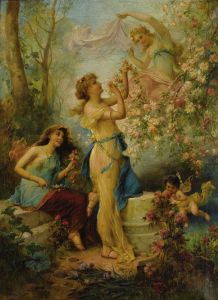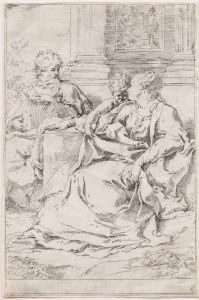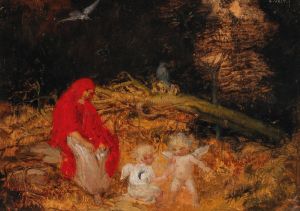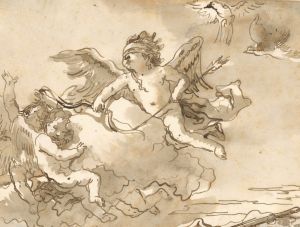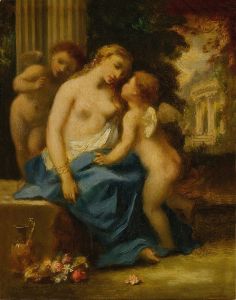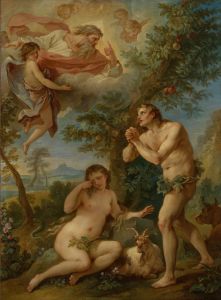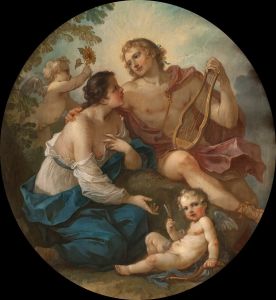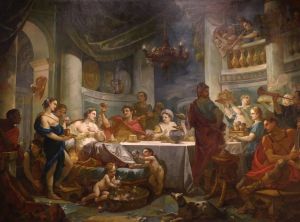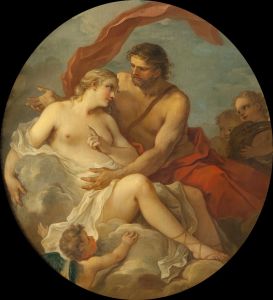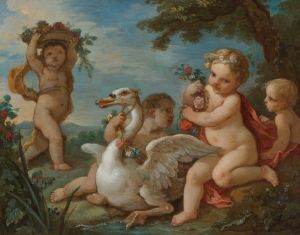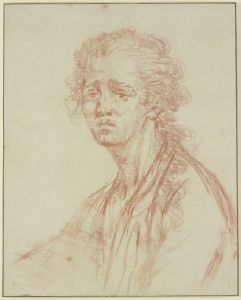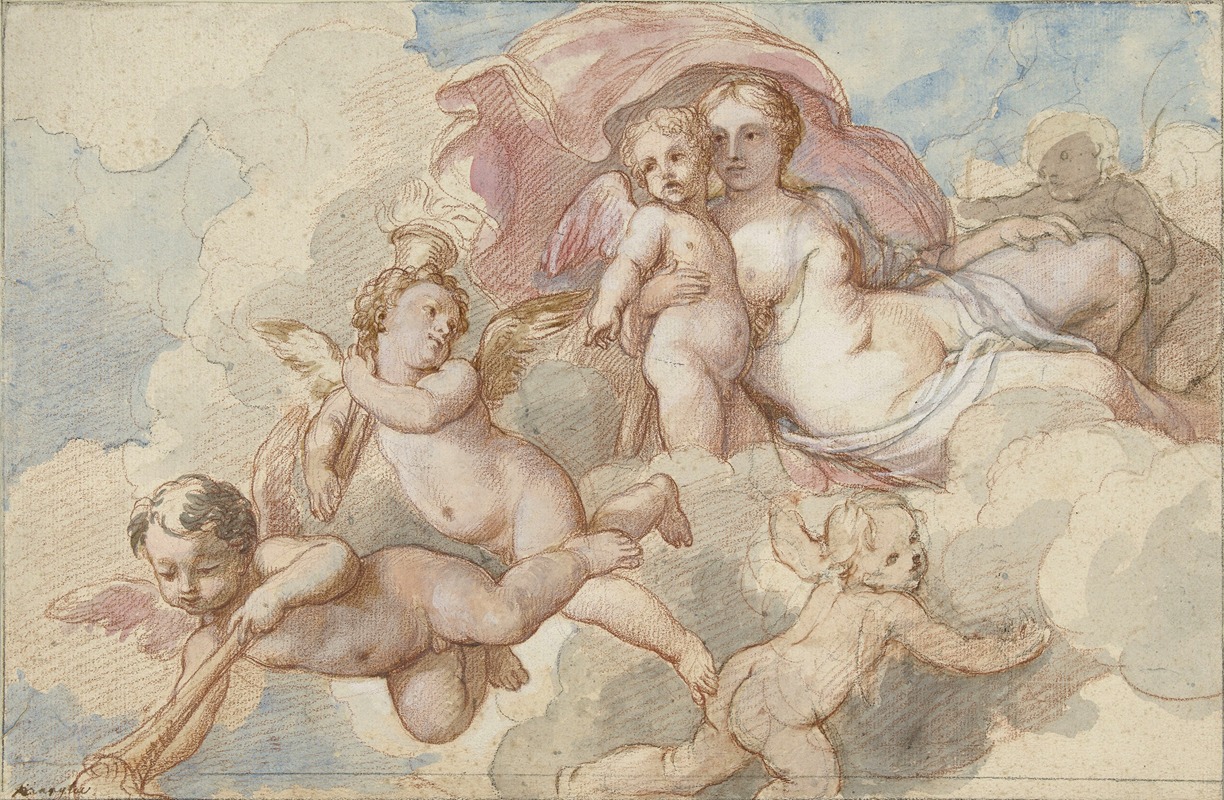
Venus met Amor en putti
A hand-painted replica of Charles-Joseph Natoire’s masterpiece Venus met Amor en putti, meticulously crafted by professional artists to capture the true essence of the original. Each piece is created with museum-quality canvas and rare mineral pigments, carefully painted by experienced artists with delicate brushstrokes and rich, layered colors to perfectly recreate the texture of the original artwork. Unlike machine-printed reproductions, this hand-painted version brings the painting to life, infused with the artist’s emotions and skill in every stroke. Whether for personal collection or home decoration, it instantly elevates the artistic atmosphere of any space.
Charles-Joseph Natoire (1700–1777) was a prominent French Rococo painter and one of the leading artists of his time. Known for his elegant and refined style, Natoire created numerous works that exemplified the decorative and lighthearted qualities of the Rococo movement. Among his notable works is the painting Venus met Amor en putti (translated as Venus with Amor and Putti), which reflects the artist's mastery of mythological and allegorical themes.
This painting depicts Venus, the Roman goddess of love and beauty, accompanied by Amor (the Roman counterpart of Cupid) and several putti, or cherubic child figures often associated with love and playfulness in art. The composition is characteristic of the Rococo style, with its emphasis on soft, flowing lines, delicate color palettes, and a sense of grace and intimacy. Natoire's skillful use of light and shadow enhances the sensuality of the scene, while the figures are rendered with a sense of elegance and idealized beauty.
The subject matter of Venus met Amor en putti aligns with the Rococo fascination with themes of love, mythology, and the idyllic. Such works were often commissioned for private collections or as decorative pieces for aristocratic interiors, reflecting the tastes and cultural values of 18th-century France. Natoire's ability to combine classical themes with the playful and ornamental qualities of the Rococo made him a sought-after artist during his career.
While specific details about the commission or provenance of Venus met Amor en putti are not widely documented, the painting is representative of Natoire's broader body of work, which includes mythological scenes, religious compositions, and decorative projects. Natoire held prestigious positions during his lifetime, including serving as the director of the French Academy in Rome, where he influenced a generation of artists and contributed to the dissemination of French artistic ideals.
Today, Venus met Amor en putti is recognized as an example of Natoire's contribution to the Rococo movement and his ability to bring classical themes to life with a sense of charm and sophistication. The painting continues to be appreciated for its artistic merit and its place within the broader context of 18th-century European art.





